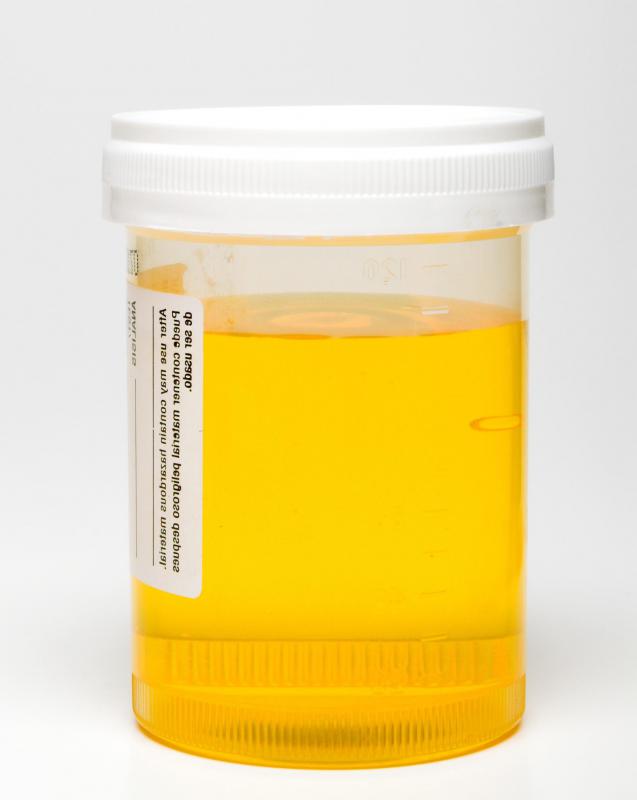At TheHealthBoard, we're committed to delivering accurate, trustworthy information. Our expert-authored content is rigorously fact-checked and sourced from credible authorities. Discover how we uphold the highest standards in providing you with reliable knowledge.
What Is Urine Osmolarity?
Urine osmolarity is a measure of the concentration of solutes in a liter of urine. The measurement is done in liters for reasons of scientific standardization even in countries that do not use metric measurement. In a urinalysis, one of the tests a lab technician will run is an osmolarity test. The results can provide important information about the patient's health and will be recorded on the lab record along with other data from the sample.
In a urine osmolarity test, the technician looks at the concentration of particles like urea, sodium, and glucose in the urine. If the concentrations are higher or lower than they should be, this can indicate that the patient has a health problem. Average measurements can vary between patients, and laboratories and the lab will usually provide a reference value so doctors know whether the results are high or low.

When urine osmolarity is low, it suggests that the patient's kidneys are having trouble concentrating the urine, and she may be in a state of kidney failure. Very dilute urine can also be a warning sign of diabetes. Heavy dilution usually comes with excessive thirst. The patient drinks copious amounts of water and may feel a constant sense of thirst even after drinking. High urine osmolarity indicates that the patient's urine is too concentrated, possibly as a result of dehydration or shock.

Doctors typically order a urinalysis when a patient presents with any urinary tract symptoms such as bloody urine, frequent urination, or sudden incontinence. The test will also include an evaluation for specific compounds in the urine, like white blood cells indicative of infection. If a doctor wants to know more about how well the kidneys concentrate urine, she may request a urine osmolarity test early in the morning, when the patient has not had anything to drink for several hours, and again after drinking some fluids. The difference between the tests can show how well the kidneys are functioning.

Dilute urine is not necessarily an immediate cause for concern. The doctor will conduct a patient interview to list all the symptoms and may take note of any special circumstances that could have an impact on urine osmolarity. For example, if the patient is in treatment for a urinary tract infection, the doctor would expect the urine to be dilute because the patient is drinking a lot of fluid. A follow-up test after the infection is clear will help the doctor determine if the kidneys recovered successfully from the infection.
AS FEATURED ON:
AS FEATURED ON:
















Discuss this Article
Post your comments